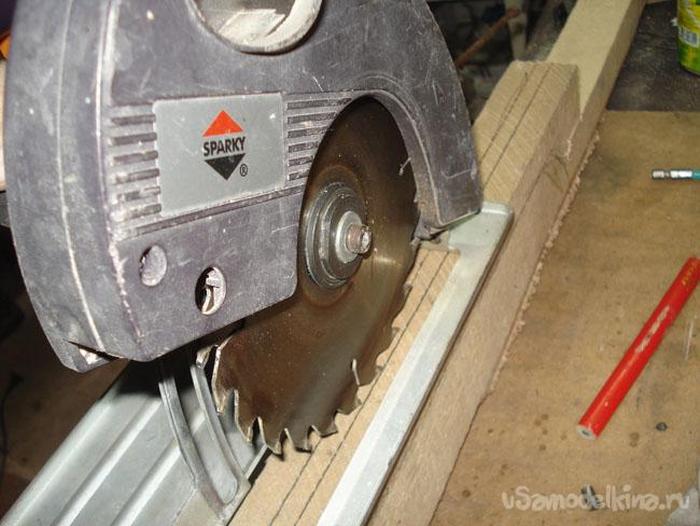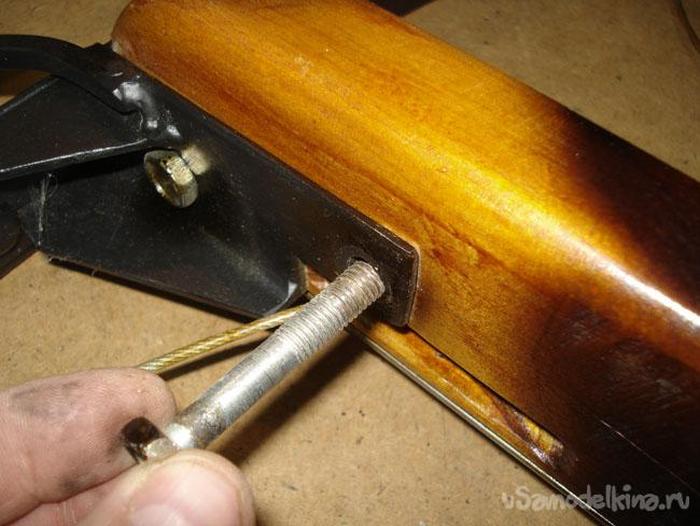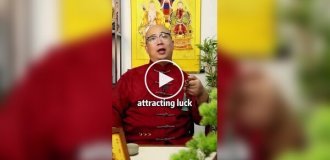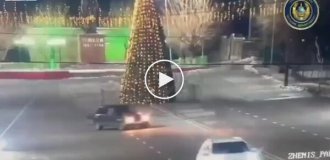DIY long-range crossbow (102 photos)
To make a homemade crossbow you will need:
*A block of non-resinous wood, size 700x10x40 mm.
*The second leaf of the spring of the Moskvich car.
*Profile pipe 50x50x2 mm. 10 cm long.
*Profile pipe 15x15x1.5 mm.
*A small piece of 2mm sheet metal.
*Stainless steel metal 4 mm thick. and 0.5-1 mm. (for the descender).
*Steel corner 50x50x4 mm. 35 cm long.
*Rod D=8 mm. 40 cm long.
*Bolts with nuts D=8
*Stainless steel molding from the VAZ-2106 door 2 pcs.
*Metal rollers 2 pcs., glass lifting mechanism from the door of a VAZ car.
*Cable D=3 mm. 3 m long, two terminal loops.
*Epoxy resin, wood stain, wood varnish for exterior use.
*Two small springs (working in tension).
*A dozen nails for roofing felt, one two hundred nail, tube D=6 mm, small washers.
We will use the following tools:
*Welding machine.
*Hand-held circular saw.
*Electric drill with speed control, carbide drills for metal D=3, 5, 8, 10 mm.
*Bulgarian, cutting discs for metal, grinding discs for wood.
*Keys, pliers, screwdriver, vice, narrow chisel, knife.
*File, sandpaper.
*Safety glasses.
Point 1. Making a stock.
Let's take a well-dried wooden block, mine was made of birch, and sketch out a sketch of the bed on it. We customize the size of the butt for each individual (according to your height), and the stock depending on the length of the arrows you will use. I use 440 mm arrows, but I had to save money on the butt, I left only 300 mm, so the total length turned out to be 740 mm, I didn’t dare to do more.


Let's draw a marking for the guide sample, for the arrow fletching, width 5 mm, depth 10 mm.

Using a circular saw, we cut out the groove the entire length, to the end of the trigger (lock).

It should look something like this.

Using a drill D=12 mm. We select a cavity for the trigger, level the ledges with a chisel and knife. We drill a hole for the trigger, bore it with a chisel and knife.

Point 2. Making a lock or trigger device.
Let's take the "walnut" type as the basis for the lock. To prevent anything from rusting, we will use stainless steel, take a sheet 4-5 mm thick, if you can’t find one, make it a composite of several sheets glued together and taken with rivets. Draw the shape of the parts on the metal.


Using a cutting disc and a grinder, we cut out the workpiece according to the markings.

In the center of the “nut” we drill a hole for the axis of rotation, D = 6 mm.

We process all sides with a file.

We sand with sandpaper, achieving a completely smooth surface.

It should look something like this.

We grind out the remaining elements of the lock, the sear.

I lengthen the trigger with two thin sheets of stainless steel and secure it with homemade rivets.

Using a sharpening machine we achieve the desired shape of the workpieces.

We make the housing of the trigger mechanism from a thin sheet of metal.

We drill three holes D = 2.5 mm in the body of the sear, one for the fastening axis and two for fastening the springs.


Let's attach the trigger spring into place.


Let's see on the table how the parts become in the cocked state.

And like after the shot.

Let's place one side of the case on the inside of the mechanism and drill holes in place for all the axes.

From a two hundred nail, 6 mm in diameter, we will make an axis for the “nut”.

Saw off the sharp end of the nail.

We measure the length of the future axis and saw it off.


Using thin nails for roofing felt, we will make the remaining rivet axles. Use a grinder to remove the shimmer on the nail heads.

Now they will fit well to the body.

Let's install the sear on the axle in the body, use intermediate washers.


We saw off the excess length of the nail, leaving 1 mm. on both sides for rolling.

Using an anvil, hammer the end of the axle.

We drill a hole for the axle with a spacer to attach the sear spring.

From a suitable tube we cut off a spacer sleeve for this axis.

We move one side of the body to the side.

We install the axle, bushing and engage the spring.

We assemble the body halves together.

We saw off the excess length, leaving a protrusion of 1 mm. under the hammer.

Let's roll it.

Now you can install the largest rivet axle of the lock. Aligning the holes.

Let’s take the previously measured and sawed-off axis D=6 mm and immediately tap it a little with a hammer on one side.

We install it in place.

And we’ll also roll it, the main thing is not to overdo it, so as not to jam the moving mechanism inside.

Point 3. Installation of the lock mechanism in the stock.


If something prevents the lock from sitting well in place, we modify it with a chisel or knife. After installation, check how the trigger moves.

If everything is fine, you can drill holes for the mounting screws and screw them into place.



Item 4. Boom guides.
Now we need decorations from the door of the VAZ-2006, they are also made of stainless steel, which is very good. To give them additional rigidity, epoxy resin was poured inside.

After complete hardening, in a day, we will drill four holes D = 3 mm in each for fastening screws.

Using a large drill, we will make hidden places for the heads of the screws so that the bowstring cable does not get caught when it slides along it.

We polish the hole exits with fine sandpaper to remove all burrs that damage the cable.

We install the finished guides on the bed.

We make sure that the screws do not go through in thin places.

We check that the lock moves without snagging on the guides.


Point 5. Making an arc or shoulders.
From the same donor doors, using a grinder, we extract the rollers of the glass lifting mechanism.

From these we will make blocks for the shoulders, and the arch itself from the second leaf of a spring from an old Moskvich car.

We will make pads to attach the spring to the stock.
To do this, from a 50x50 mm corner. Let's cut out the component elements to assemble them using welding, like this mount (block).

We will process the welds with a grinder. Let's drill mounting holes D=10 mm. under the bolts.

Based on the finished sample and the dimensions of the resulting block, we make grooves for mounting in the stock. We try on the fit, achieve a tight fit and fastening. According to the calculated position of the future bowstring, we outline and make a through groove in the sidewall of the stock, 70 mm long. 10 mm wide, the lower bowstrings will go here.

We bend and weld the leg bracket (stirrup).


Ears for blocks.
From a 50x50 profile pipe we will make eyes for attaching the roller blocks to the arc (spring).

The most difficult thing in making the arc itself from a spring at home is drilling holes in it. It is necessary to drill with a drill at low speeds so that the drill does not burn, and constantly use water. If possible, drill with drills of different diameters, from thin to thick in increments of 0.5-1 mm, and constantly sharpen the tool.
We fasten the brackets with short M8 bolts and grind off the caps.

We attach the spring to the block with two M8 bolts, followed by a small weld along the edge of the fastening.



Now you need to open the bed with varnish and dry it.
We install the block with an arc on the stock, hammer down the metal-wood for a tight fit.

Insert and tighten the M8 bolts.


From long M10 bolts we will make axle bolts reduced in length with a short thread for blocks.

Let's take a tube from the anchor and use it to make spacer bushings for the block axes.

Let's drill holes D=10 mm in the ears. to install blocks. We install rigid loop ends on the cable.

We install a block with a cable on one side of the shoulder. Do not tighten the nut too much, so as not to jam the rotation of the roller.

Drill a hole in the nut and bolt for the stud.


We install the stud and press it with the nut in the direction of unscrewing.


We push the cable through the hole in the stock and do the same with installing the roller on the other side of the shoulder.

Point 6. Upper part of the lock.
From a profile pipe 15x15 mm. saw off two 120 mm sections. Using a grinder, we cut out two (L) shaped blanks from sheet metal, one rectangular plate (on the top) and a triangle (on the back).

We connect all the parts together by welding, and clean the welding seams with a grinding disc to make it look like a solid part.

From an old folding steel meter, we make an elastic boom holder.

The photo shows the mounting bolts for the rack for the optical sight.

The same thing, only the bolts also clamp the boom holder.

The sight rail itself (dovetail) is made of the same 2 mm sheet metal, with the sides ground off for mounting optics.

A square pad is visible along the optic rail to raise the rear and thereby tilt the scope down for correct aiming at targets beyond 25 m.

We install the lock bracket on the stock and drill holes for fastening, self-tapping screws and an M6 bolt.


We tighten the small screws so that they do not go into the arrow feather channel.

We tighten the back screw.

Additionally, we drill a hole and install the last bolt.




We install an optical sight.



























